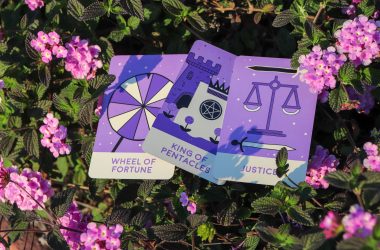Have you ever wished you could go to the any of the beaches in Long Beach and swim in clean ocean water or catch a decent wave? In reality, trash and bacteria linger beneath the surface of the murky water, and waves only roll in during hurricanes. Many people can’t even remember a time when Long Beach was anything like the neighboring Huntington Beach to the south or Hermosa Beach to the north, but it hasn’t always been so dull.
In order to restore Long Beach to its former state of cleanliness and “surf-ability,” the rocky barrier that runs 8.4 miles along the coast of Long Beach must be taken out, either in parts or as a whole.
According to the Surfrider Foundation, Long Beach’s breakwater separates the current of the Catalina Channel from the ships that sail in and out of the ports of Long Beach. It is broken into three sections: the San Pedro Breakwater, built in the early 1900s protecting the Los Angeles Harbor; the Middle Breakwater, built in the 1920s and 30s, which protects the Long Beach Harbor; and the Long Beach Breakwater, built in the 1940s to protect a no longer functioning Naval base. Each of the barriers has two openings that allow cargo ships to enter and leave the ports.
Some businesses and local residents disagree with this idea because the breakwater provides necessary protection for the 78.2 million metric revenue tons of cargo, which are responsible for an estimated $14.5 billion in trade-related wages and provide jobs globally, according to the Port of Long Beach in a report.
However, the breakwater is costly to maintain. Hurricane Marie, which grazed the Long Beach Harbor during August 2014, left three breaches in the breakwater after an onslaught of 15-foot waves for four days straight. Approximately 4,100 feet of varying degrees of damage were reported by the Army Corps, and the repair costs totaled to about $20 million, according to the Press Telegram.
The repairs cost more than the revenue that the breakwater provides.
Removing some sections of the Long Beach Breakwater would not mean that cargo ships could not come in. The remaining San Pedro and Middle Breakwaters would protect the ships coming into Long Beach Harbor and Los Angeles Harbor.
According to the Surfrider Foundation, a non-profit environmental organization interested in beach cleanup and protection, the Long Beach Breakwater was built to protect a U. S. Navy base that is now inoperable. That means that the Long Beach section of the breakwater has lost its original purpose.
There are other environmental issues that surround the Long Beach Breakwater. ABC7 News of Los Angeles named Long Beach one of the most polluted beaches in California. According to Heal the Bay’s Beach Report Card in 2013, all nine oceanfront beaches received a failing D or F letter grade from an environmental group testing Southern California water quality.
“It’s very dirty because all the pollution is trapped within the breakwater,” said California State University, Long Beach geology and oceanography professor Bruce Perry. The stagnant polluted water has led to the development and growth of different types of bacteria.
The fate of the Long Beach Breakwater is in the hands of the U.S. Army, which has decided to leave the breakwater up and maintain it for the time being, while allowing case studies to be conducted on the efficacy, economic feasibility and environmental sustainability of multiple breakwater conclusions.
“They want to know if it’s going to restore the ecosystem… cleaner water, more marine life due to wave action, [but] it cannot damage any existing coastal properties,” Long Beach Deputy Chief of Staff Daniel Brezenoff said.
The Surfrider Foundation is spearheading the campaign to take down or alter the Long Beach Breakwater, and its members include coastal engineers, and a former Army Corps Engineer.
“We started this effort in 1989… and at that point people just hated us,” Surfrider Chair Seamus Ian Innes said. “Through a lot of persistent effort, we got to the point where the mayor is onboard.” Innes is a coastal engineer and graduate from University of California, Berkeley. The Long Beach chapter works with the city of Long Beach and Mayor Robert Garcia to develop solutions that will benefit the city, the residents, the port and the environment.
Some reluctant oceanfront dwellers are worried about their real estate vulnerability. “Removal of the breakwater would allow a natural long shore current to naturally widen their beach and keep it wide,” said Perry. Some residents believe there are other alternatives. “There are some aerial photos of the peninsula [before the breakwater was built] where there were a couple jetties on the peninsula at that time… finger jetties,” said Kelli Koller, owner of Seventh Wave Surf Shop in downtown Long Beach. The jetties would help to protect oceanfront properties from being damaged.
There are high levels of bacteria in all nine beaches affected by the breakwater. The City Office has conducted a reconnaissance study to approve further case studies to be conducted in order to determine if the breakwater should be altered, according to Moffatt & Nichol, a local engineering firm. However, the United States Congress still needs to approve budgeting to allow any further studies to be done on the breakwater.
Anyone who is interested in learning about the breakwater issue can go to the Surfrider Long Beach Chapter meeting, which is being held Feb. 11, at Seventh Wave Surf Shop, at 6:30 p.m.




It’s just a matter of time…Look at the number of new apartments being built…You know there are a lot of surfers coming.
Why doesn’t Naples consider the same type of barrier that the Netherlands uses to controls waves.